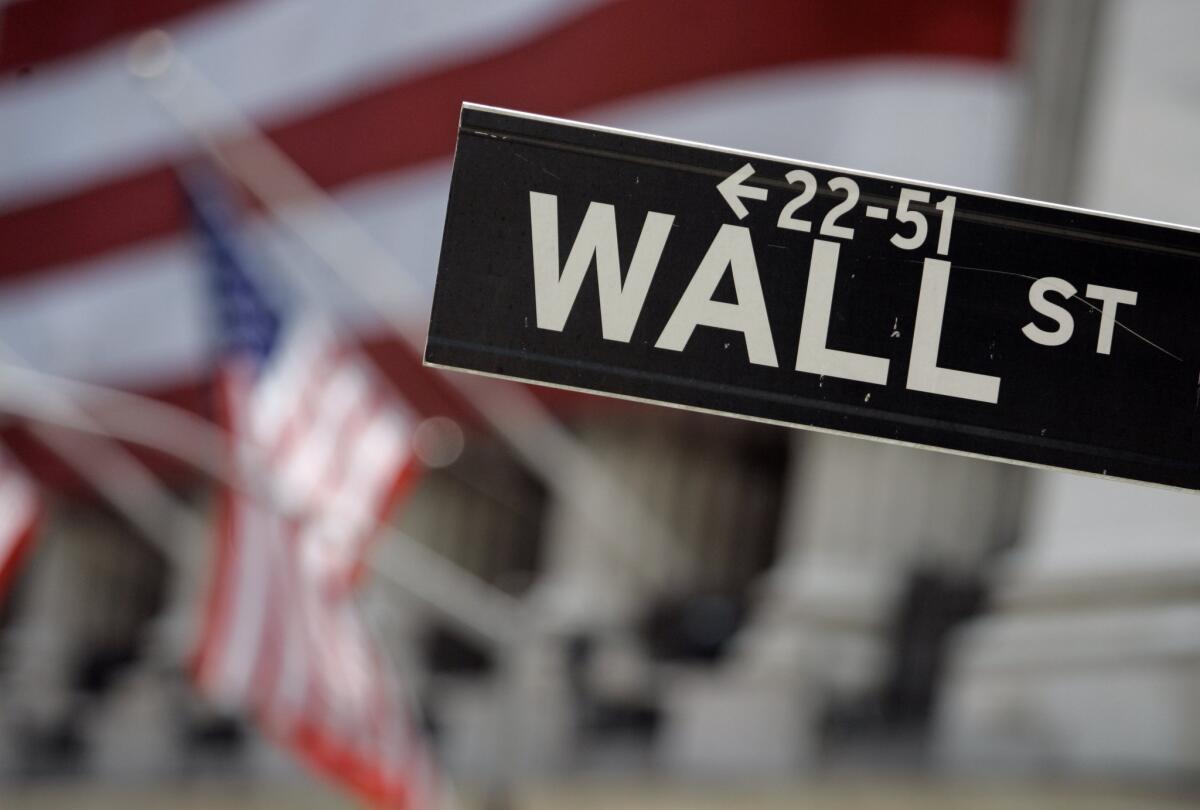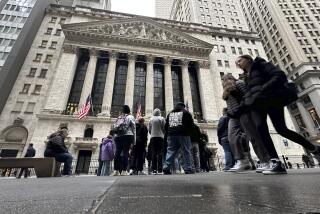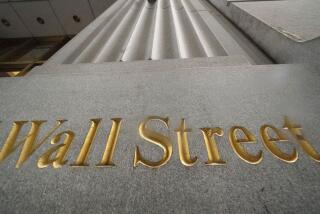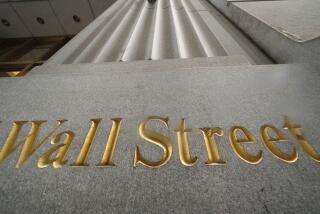Stocks jump almost 5%, erasing some of Monday’s steep dive

Stocks on Tuesday recouped most of their historic losses from Monday as hopes rose, faded and then rose again on Wall Street that the U.S. government will try to cushion the economic pain from the coronavirus.
The day’s moves were a microcosm of the severe swings that have dominated recent weeks, and market watchers say they are likely to continue until the number of infections stops accelerating. In the meantime, investors want to see a big, coordinated response from governments and central banks to shore up the virus-weakened economy.
The Standard & Poor’s 500 index surged as much as 3.7% in the morning, only to see the gains evaporate by midday. The index then bounced up and down before turning decisively higher after President Trump pitched his ideas for a break on payroll taxes and other economic relief to Senate Republicans.
By the end of trading, the S&P 500 was up 135.67 points, or 4.9%, to 2,882.23 — erasing three-fifths of Monday’s loss, which was the sharpest since 2008. The Dow Jones industrial average rose 1,167.14 points, or 4.9%, to 25,018.16, and the Nasdaq composite jumped 393.58, or 5%, to 8,344.25.
The recovery is pulling the stock market a bit further from the edge of a bear market, signified by a drop of 20% from a record. The S&P 500 is down 14.9% from its high. If it can rally back to that point, it would extend the longest-ever bull market, which began its climb after the market hit bottom March 9, 2009.
Tuesday’s volatility reflected the mood of a market just as preoccupied with the virus as the rest of the world. Since U.S. stocks set their record high just a few weeks ago, traders have crossed over from dismissing the economic pain created by COVID-19 — thinking it’s similar to the flu and could stay mostly contained in China — to being in thrall to it — worrying that it may cause a worldwide recession.
Although they won’t cure illnesses or get quarantined workers back into factories, spending and stimulus programs would put cash into the hands of households and businesses while health experts try to corral the virus. That could stave off or at least moderate a possible recession.
Investors saw glimmers of a coordinated response, which led to Tuesday’s optimism.
At a White House news briefing Monday night, Trump said his administration would be asking Congress to cut payroll taxes and pass other quick measures aimed at easing the effect of the coronavirus on workers.
In Japan, a task force set up by the prime minister approved a 430-billion yen ($4.1-billion) package Tuesday with support for small to medium-size businesses.
But as markets waited Tuesday for details about Trump’s plan, prices oscillated sharply.
After a meeting with major health insurers, Trump said the government is working with the cruise line industry, one of the hardest hit by the virus. That helped lift the market, which had earlier flipped to losses amid doubts that the government would announce anything soon.
Perhaps the most notable move in markets Tuesday was that Treasury yields pushed higher. The bond market rang warning bells about the virus long before the stock market, and a rise in yields is a sign that fear has receded a bit.
The 10-year Treasury yield rose to 0.79% from 0.49% late Monday. A week ago, it had never been below 1%.
Brent crude, the international standard, rose $2.86, or 8.3%, to $37.22 a barrel, while benchmark U.S. crude rose $3.23, or 10.4%, to $34.36 a barrel. Oil prices plunged 25% on Monday amid a price war between producers, who are pulling more oil out of the ground even though demand is falling because of the virus.
Until the outbreak is contained, many investors have had a “sell-first, ask questions later” reaction to the uncertainty, said Greg McBride, chief financial analyst at Bankrate.com.
Still, he urged investors to avoid changing their long-term investment strategies, which can play out over years or decades, because of short-term volatility.
“Markets fall quickly, but they can rebound rapidly,” McBride said. “Investing is a marathon, not a sprint.”
More to Read
Inside the business of entertainment
The Wide Shot brings you news, analysis and insights on everything from streaming wars to production — and what it all means for the future.
You may occasionally receive promotional content from the Los Angeles Times.










